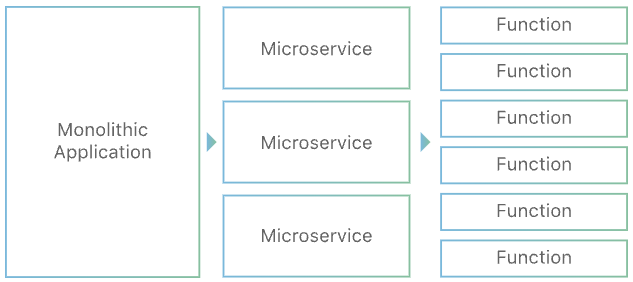article

See the light
Exploring Functions as Microservices: A Powerful Approach to Cloud-Based Applications
3 min read
Jun 11, 2023
In the realm of cloud computing, the concepts of Functions as a Service (FaaS) and microservices have gained significant attention. While they may appear similar, they actually represent distinct concepts. In this article, we will delve into the world of Functions as a Service (FaaS) and microservices, understanding their differences and exploring the fascinating concept of Functions as Microservices (FaMS). We will also introduce Rapid Back-End, a customizable solution that leverages FaMS for building effective and efficient cloud-based applications.
Microservices vs. FaaS
As defined by cloudfalare.com, microservices are modular components that form the building blocks of applications. On the other hand, FaaS comprises collections of functions that have a combined purpose and are highly segmented. These functions perform the same tasks as the original microservice but but are broken into smaller parts. FaaS offers engineers the ability to delegate some infrastructure work to a cloud provider, reducing their workload.
To visualize the relationship between microservices and FaaS, let's refer to a diagram borrowed from cloudflare.com:

Diagram taken from cloudflare.com
As depicted, FaaS is derived from microservices, showcasing the breakdown of functions at a granular level.
Functions as Microservices (FaMS)
The adoption of FaaS can lead to a proliferation of functions (nanoservices), especially when transitioning from a microservices-based architecture. This scenario gave rise to the concept of Functions as Microservices (FaMS). FaMS allows developers to harness the benefits of cloud functions while retaining the modular nature of microservices. It is often referred to as serverless microservices, emphasizing the removal of excessive lambdas that comprise many cloud-based applications.
The Challenges of Nanoservices
Cloud-based applications built with a “nanoservice” architecture, consisting of numerous small services, can present challenges. Debugging and deploying such applications become complex and time-consuming. Moreover, onboarding new engineers to such a system becomes a cumbersome task, as they need to grasp the extensive surface area. Code maintenance becomes intricate, requiring separate deployment processes and adding to the overall overhead.
Advantages of FaMS and Rapid Back-End
By adopting FaMS and leveraging Rapid Back-End, developers can overcome the challenges associated with nanoservices. Rapid Back-End significantly reduces the surface area, simplifying the building and maintenance of functions. With a focus on object-oriented design patterns, code becomes highly modular and easier to manage. Rapid Back-End, a tested and extensible solution, offers seamless local development and swift cloud deployment within minutes provided the user has an existing AWS account. It provides flexibility by supporting MongoDB and being customizable if SQL databases preferred. Security is prioritized, with built-in authentication using JWTs and secure cookie-based (HTTP secure) sessions. The API Gateway is configured to only accept traffic from designated IP addresses, adhering to best practices and ensuring a hassle-free API deployment experience.
Unlocking the Power of Rapid Back-End
Designed for those seeking a quick start with a functional back-end, Rapid Back-End empowers developers for rapid prototyping or building monorepos of functions as microservices. Consolidating dependencies and services in one place provides significant advantages. It offers a robust and efficient solution, allowing developers to effortlessly provision and destroy cloud resources.
In the ever-evolving landscape of cloud-based applications, embracing the power of Functions as Microservices can revolutionize the development process. Rapid Back-End enables developers to combine the benefits of FaaS and microservices, creating scalable and modular applications. Rapid Back-End, with its customizable features and seamless deployment capabilities, offers a compelling solution for those seeking a quick and efficient way to build APIs. Whether for rapid prototyping or large-scale projects, Rapid Back-End simplifies the development journey.
